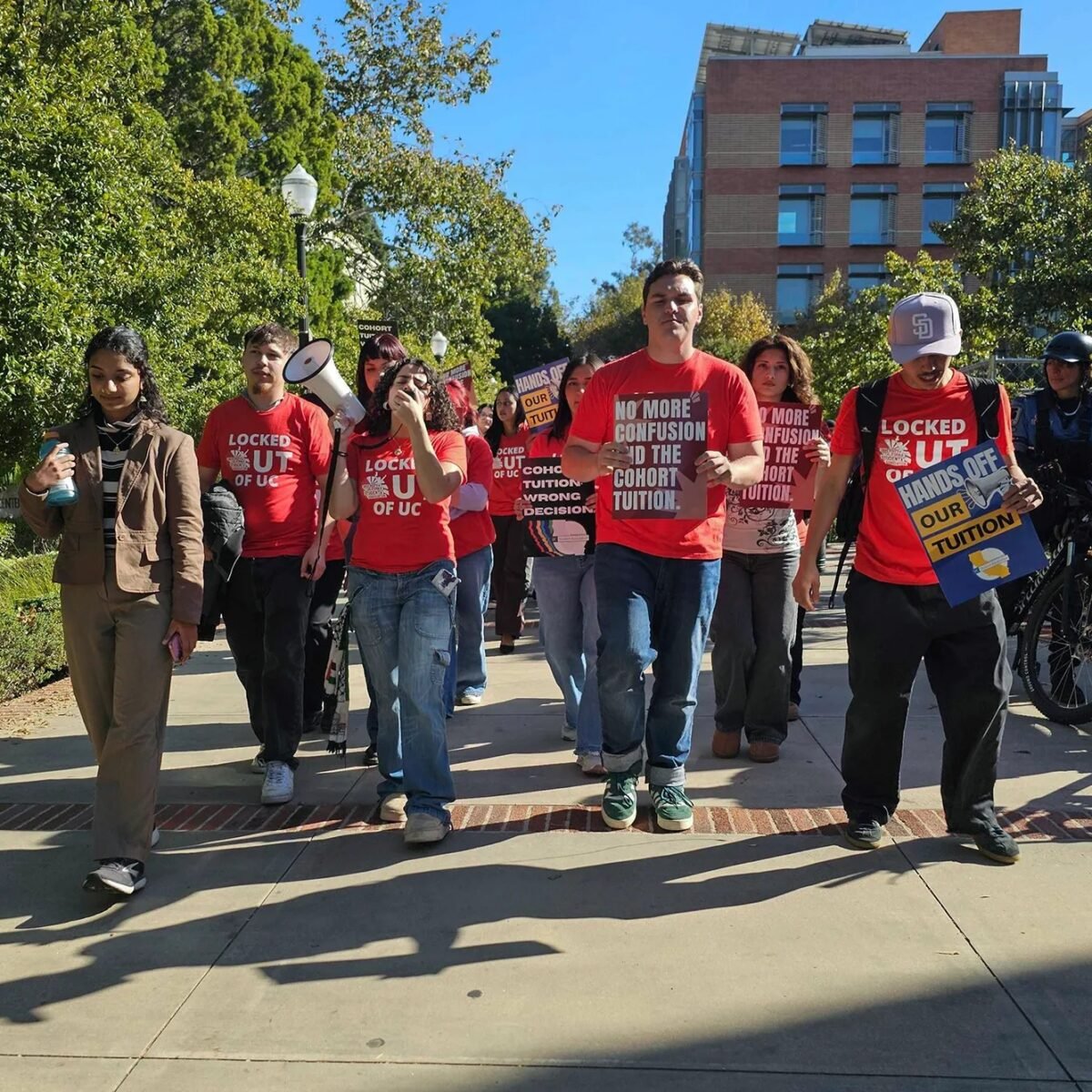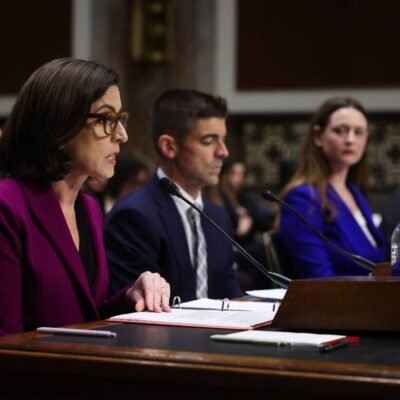Already, the UC is enrolling about 4,000 more California students than the state is giving them money for. Because of this, UC reported that it brings in less money per student to educate them than the system collected four years ago — down to $28,000 from $30,000.
Nearly 800 employees have been laid off across the UC system this year, UC President James B. Milliken said. “These layoffs reflect the seriousness of the financial pressures we are navigating,” he said this morning.
UC has also fought to recover 1,600 federal research grants that the Trump administration suspended or terminated. While many have been restored through court orders, 400 are still defunded, totalling $230 million, Milliken said. Meanwhile the UC has sued to halt Trump from changing a formula for how much campuses receive in grant funds to maintain labs. At stake is another half-billion dollars. That money supports jobs and regional economies; the UC is the state’s second-largest employer.
UC officials persuaded the regents to make other technical changes that increase the odds that tuition for the next cohort would rise more than it has so far, but tuition increases would still be capped at 5%.
One allows UC to defer the financial impact if inflation exceeds 5%. In that case, the percent that is above 5% would be applied to a future year when the inflation rate is lower.
Had this plan been in place since 2022, tuition would have risen by 1.5% more than it did this year, UC finance staff said.
The UC Regents also agreed to include another one-percentage-point increase in cohort tuition that would be dedicated to building maintenance or another campus need. Still, tuition increases wouldn’t exceed 5%. The system regularly asks for hundreds of millions in money but often gets much less. The system is able to issue bonds for new construction, but the amount is limited.
In the original plan today, the additional revenue from this 1% bump would have been limited to structures that service students. Now, the extra 1% can be used by campus chancellors for other spending priorities. The system has a deferred maintenance backlog of $9 billion, UC officials said today.
The UC student association said capital projects shouldn’t be paid for with tuition dollars. “We urge the Board to reject the proposed 1% step increase, or commit to dedicating a portion of the revenue to go to vital student supports, such as basic needs, retention programs and health services,” the group wrote in a public letter.
Some students fall through the cracks
Even with generous financial aid, some California students at UC still incur hardship and a bureaucratic runaround.
Joshua Mata entered UC Berkeley in 2019 intent on taking on no debt. He arranged to pay a friend $300 to use the parking spot in her apartment building to park a used van he bought to sleep in. The friend provided him with a key to her apartment so he could bathe.
He was no stranger to residing in cars — housing stability was sporadic after he moved to California to attend community college. A year into his studies, he received in-state tuition status. His story is unusual: He lived with his father in China, who taught English, until Mata graduated from high school and moved back to the U.S. to live with his grandmother for a year in Texas before driving to California.
After three years at community college, he transferred to California’s top public university, thinking he’d retain his in-state residency status and the much lower tuition bill, with financial aid to both cover his enrollment fees and some extra money for living costs. A half-semester later, he dropped out: The campus rejected his in-state claim and froze his financial aid, leaving him with a roughly $40,000 bill, he recalled.
He wishes the campus gave him more of a heads up during the summer so he could have cleared the issue before school started. “Maybe I’d have a degree by now,” he said.
Though he re-enrolled in 2023, students with unique financial issues such as Mata must also be looked out for, said Alexis Zaragoza during public comments today. Zaragoza was a UC student regent when the UC board approved the cohort tuition model. While she opposed it, she led board members in increasing how much new tuition revenue flows to financial aid.
“Dozens of those students go through residency and income appeals, but those processes take months– sometimes up to 6 or 7 months, to be resolved. For low-income and even homeless students– those months are crucial. Many students drop out to avoid $30,000-plus charges, but are still charged them,” she said.
Asked whether the additional revenue from tuition would flow toward more student services positions such as financial aid staff or those that deal with residency disputes, UC spokesperson Omar Rodriguez wrote in an email that “any new funding generated for operating support will be used at the discretion of each location to meet their local needs.”
A few dozen students briefly shut down the meeting on the vote today after they shouted prewritten slogans at regents condemning the ongoing tuition increases. The regents asked UC police to declare an unlawful assembly and a row of police clutching batons and wearing helmets with facial shields assembled as the students left the meeting chamber. There was no confrontation between police and protesters.
This article was originally published on CalMatters and was republished under the Creative Commons Attribution-NonCommercial-NoDerivatives license.





